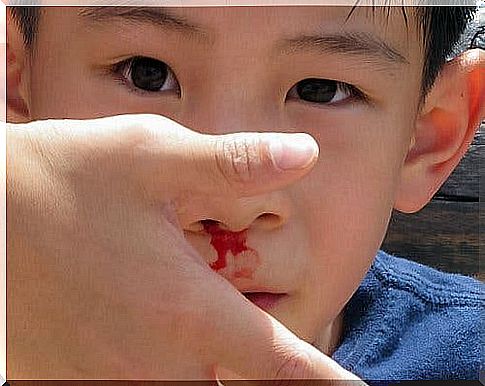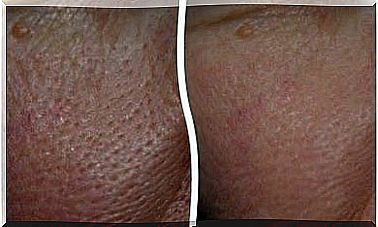Child’s Nose Bleed: How To Deal With It?

There are many ‘hints’ that may not always stop a baby from bleeding from the nose. That is why it is worth knowing a simple and effective solution.
Bleeding from the nose in a child is quite common, but can be a frightening experience due to the shock of seeing blood rush from the nose. However, it usually poses no threat and can be easily blocked.
The main thing is to remain calm and follow simple recommendations. Usually the bleeding stops fairly quickly. Only in rare cases do you need to seek medical attention.
Read on to learn more about nosebleeds in children, so you can act quickly and correctly when it does happen.
Why does nose bleeding appear in a child?

The most common cause of nosebleeds in a child is the rupture of one of the small blood vessels in the nose, causing a hemorrhage known as nosebleed. Such cracks can appear for a variety of reasons, for example:
- Picking at the nose
- Cold or allergy
- Dry surroundings,
- Taking antiallergic drugs
- Earlier trauma or impact.
When a child’s nose bleeds very often, the capillaries in the nose may be irritated or may not heal from a previous rupture. If this is the case, the doctor may begin looking for a more long-term solution.
We also recommend that you seek medical attention if the bleeding occurs as a result of an external blow to the nose or head. In this case, the child may have a blood clotting problem that should be treated by a specialist.
What to do in the event of bleeding?
To stop a child’s nose bleeding, you only need to follow a few simple steps:
- Take a handkerchief or towel and pinch the soft area of the baby’s nose, just below the nasal septum.
- Maintain the pressure and tilt the baby’s head forward.
- After 10 minutes, stop pressing. Do not do this until you are sure the wound is completely dry.
- If the bleeding continues, repeat the pressure for another 10 minutes. If blood continues to flow, see a doctor.
There are some common beliefs that are not true. This is why we want to warn you about what you should NOT do:

- Don’t make your baby lie down. Ideally, you should remain standing or sitting.
- Be sure not to tilt your baby’s head back as this may cause the blood to run down his throat.
- Do not let your baby poke their nose or stick objects such as cotton or tissues into their nose. They can increase the bleeding rather than stop it.
See a doctor if you notice the following symptoms
- In addition to bleeding, the baby becomes dizzy.
- The bleeding came from a blow to the head.
- The bleeding is more than usual.
- Bruises appear on other parts of the body.
- Other parts of the body, such as the gums, are bleeding.
How to protect your baby from nosebleeds
- Keep your baby’s fingernails short. Thanks to this, it will not be able to scratch itself if it pokes its nose.
- Take care of the air humidity in the house. If the weather is very dry, moisturize your nose with special sprays.
- Make sure your child wears the appropriate protective gear when engaging in contact sports.
And of course, stay calm and use the methods described in today’s article. In case of complications or uncertainties, you can always seek the advice of a doctor.









